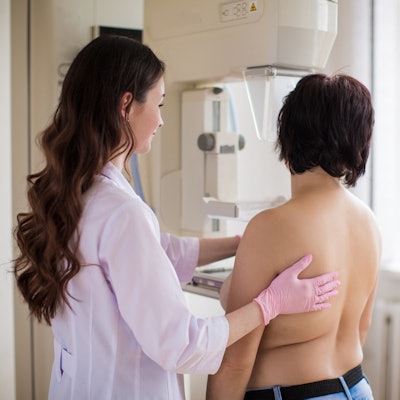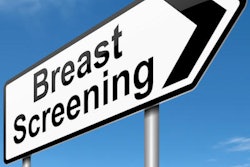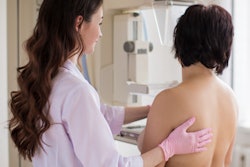
For women between ages 35 and 39 who have a family history of breast cancer, annual screening would be highly effective in detecting tumors earlier, according to the findings of a large U.K. trial published on 10 February in the Lancet's online journal, EClinicalMedicine.
The trial, funded by Breast Cancer Now, found that women ages 35 to 39 at moderate or high risk of breast cancer who underwent annual screening were more likely to have tumors detected earlier -- when they were significantly smaller and less likely to have spread to the lymph nodes -- than an unscreened control group.
Based on the results, some experts suggest that regular screening in women identified at moderate or high risk of breast cancer could be extended from ages 40 to 49 to also include ages 35 to 39.
Early detection
The prospective trial was dubbed FH02 and was led by Dr. Gareth Evans, a professor in medical genetics and cancer epidemiology at the University of Manchester. In the study, 2,899 women ages 35 to 39 at moderate or high risk of breast cancer due to their family history were offered annual screening across 34 U.K. centers between 2006 and 2015.
"In total, 50 breast cancers were detected (in 49 women,) of which 35 were invasive tumors. Of the 35 invasive breast cancers, 80% (28/35) were detected by screening when the tumor was 2 cm or smaller in size, and only 20% (7/35) had spread to the patients' lymph nodes," the University of Manchester noted in a statement.
Researchers then compared results from the FH02 trial to an unscreened cohort of women drawn from the Prospective Study of Outcomes in Sporadic Versus Hereditary Breast Cancer (POSH) trial. Like FH02, these women were ages 35 to 39 and had an increased risk of cancer.
Annual screening of younger at-risk women in FH02 nearly doubled the proportion of tumors detected before they had grown to 2 cm in size, the group found. In unscreened women in the POSH trial, just 45% (131 of 293) of breast cancers were detected when the tumor was 2 cm or smaller in size, and 54% (158 of 290) of cases had already spread to the lymph nodes.
| Invasive tumors detected with annual screening of at-risk women ages 35-39 | ||
| Unscreened women (POSH) |
Screened women (FH02) |
|
| Invasive tumors detected when 2 cm or smaller | 45% (131/293) | 80% (28/35) |
| Invasive tumors detected that hadn't spread to the lymph nodes | 54% (158/290 -- 3 unknown) | 20% (7/35) |
"Further health economic analysis will now be needed to determine the full benefits and risks in this age group, including whether breast screening may be limited to those with a high chance of developing breast cancer (rather than both high and moderate categories), as well as longer-term follow-up to understand any impact of the radiation dose on women's risk of future cancers," the University of Manchester added.
The researchers estimated that extending the screening program to at-risk women ages 35 to 39, using the current National Institute of Clinical Excellence (NICE) family history criteria, could open annual screening to potentially 3% to 4% of the female population in the U.K. -- as many as 86,000 women.
Calling for review
Breast Cancer Now has called for the upcoming review of National Health Service (NHS) cancer screening programs to include an assessment of family history services across the country and to set out the health economic evidence required to consider extending screening to women ages 35 to 39 at moderate or high risk due to their family history.
With several risk prediction models in development, researchers also hope that the inclusion of information about small genetic changes that increase breast cancer risk, known as single-nucleotide polymorphisms (SNPs), and women's breast density could one day help provide an even more accurate estimation of breast cancer risk. It could also help adapt the NHS Breast Screening Programme to offer more targeted, risk-stratified screening.
"Our trial shows that mammography screening is effective in detecting tumors earlier in this younger age group and lays the groundwork for extending this screening in women at moderate or high risk from ages 40 to 49 down to women aged 35 to 39," Evans noted. "Overdiagnosis is also far less likely to be a major issue in such a young age group. For women with a family history, removing a noninvasive tumor so early in their lives is likely to be a cancer preventive. You only need to look at current long-term survival outcomes in this group to see just how important new early detection methods could be."
"Longer-term follow-up is now required to determine the impact of this screening on women's overall survival and any impact on their future risk of primary breast cancer -- while health economic analysis will be needed to assess whether such screening could be extended to both moderate- and high-risk women," Evans concluded.



















